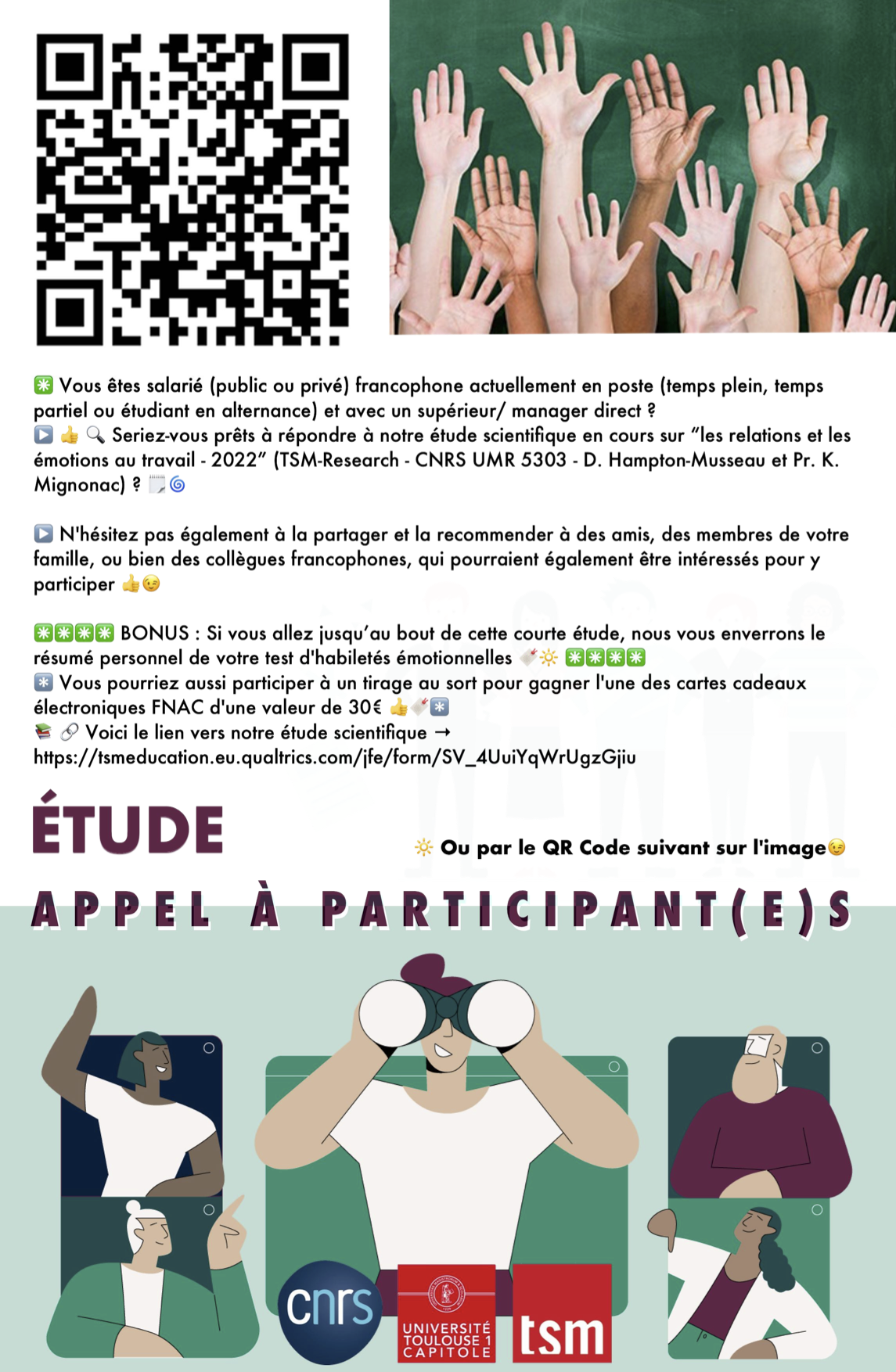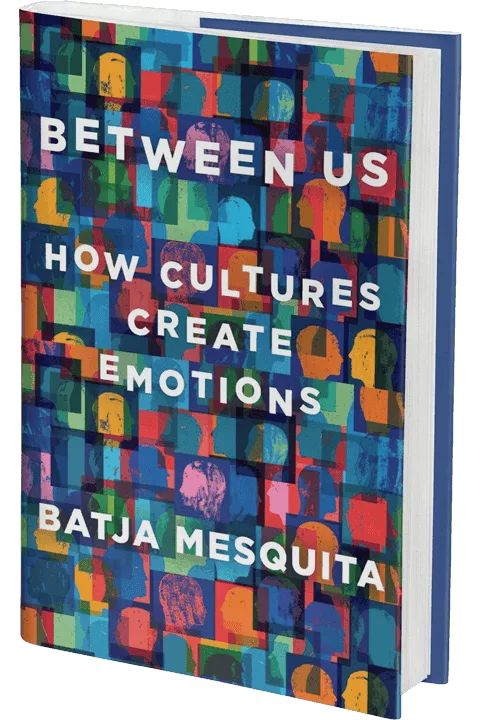🙏 Merci à toutes celles et tous ceux qui ont déjà participé aux trois étapes de notre étude 👍
✅✅ Nous avons été ravis de vous transmettre votre résumé personnalisé du test d’Habiletés Émotionnelles (à l’issue de la 3ème étape) ✅✅
✴️✴️✴️ Nous recrutons encore de nouveaux participant(e)s ✴️✴️✴️
✳️ Vous êtes salariés francophones (public ou privé) actuellement en poste (temps plein, temps partiel ou étudiant en alternance) et avec un supérieur/ manager direct ?
✳️✳️ Ou bien vous connaissez des personnes qui correspondent à ces critères…
Alors n’hésitez pas à partager c’est très simple avec le lien direct ou le QR Code à flasher ✴️🌀🔗
https://tsmeducation.eu.qualtrics.com/jfe/form/SV_4UuiYqWrUgzGjiu
🔆🔆 Nous vous remercions par avance pour le temps que vous nous consacrez …🔆🔆
*️⃣ Si vous avez des questions, ou bien si vous avez déjà accepté de participer mais n’avez pas reçu le lien vers le test d’Habiletés Émotionnelles…
–> Contactez-moi en MP 😉👍*️⃣





Paul Voestermans